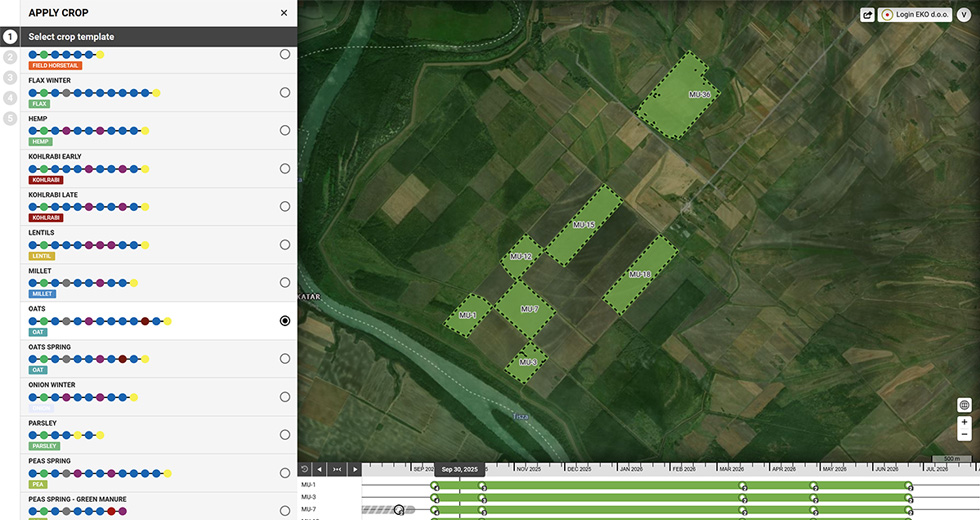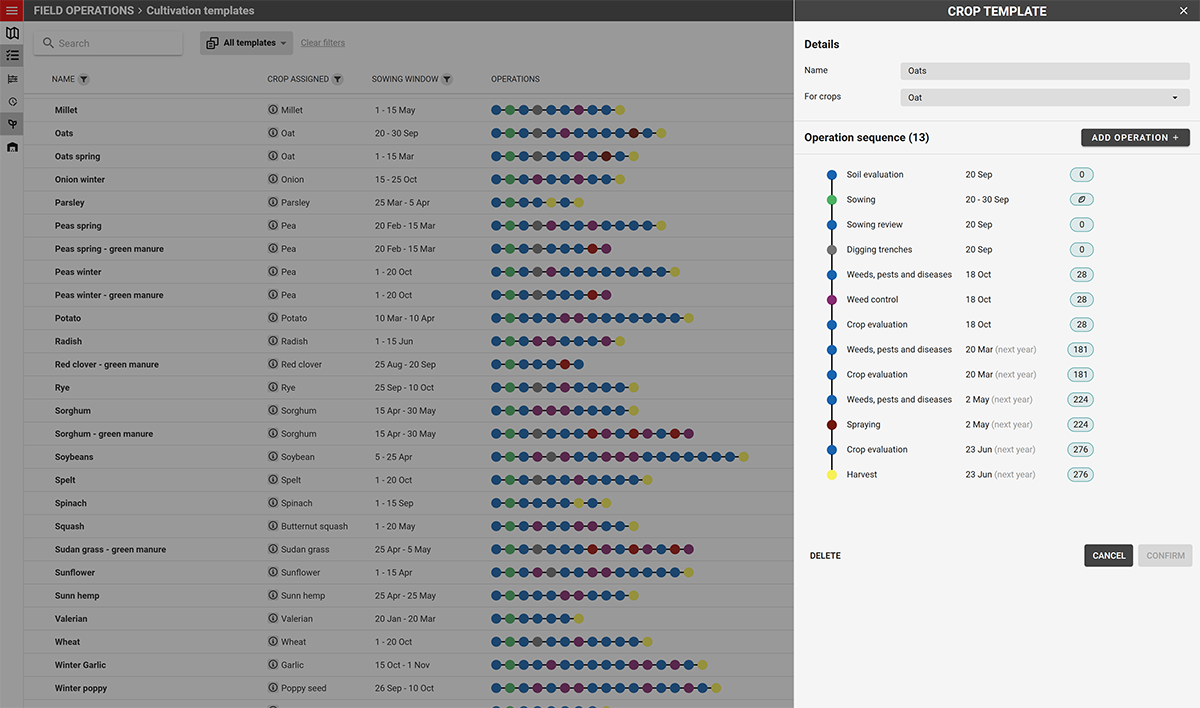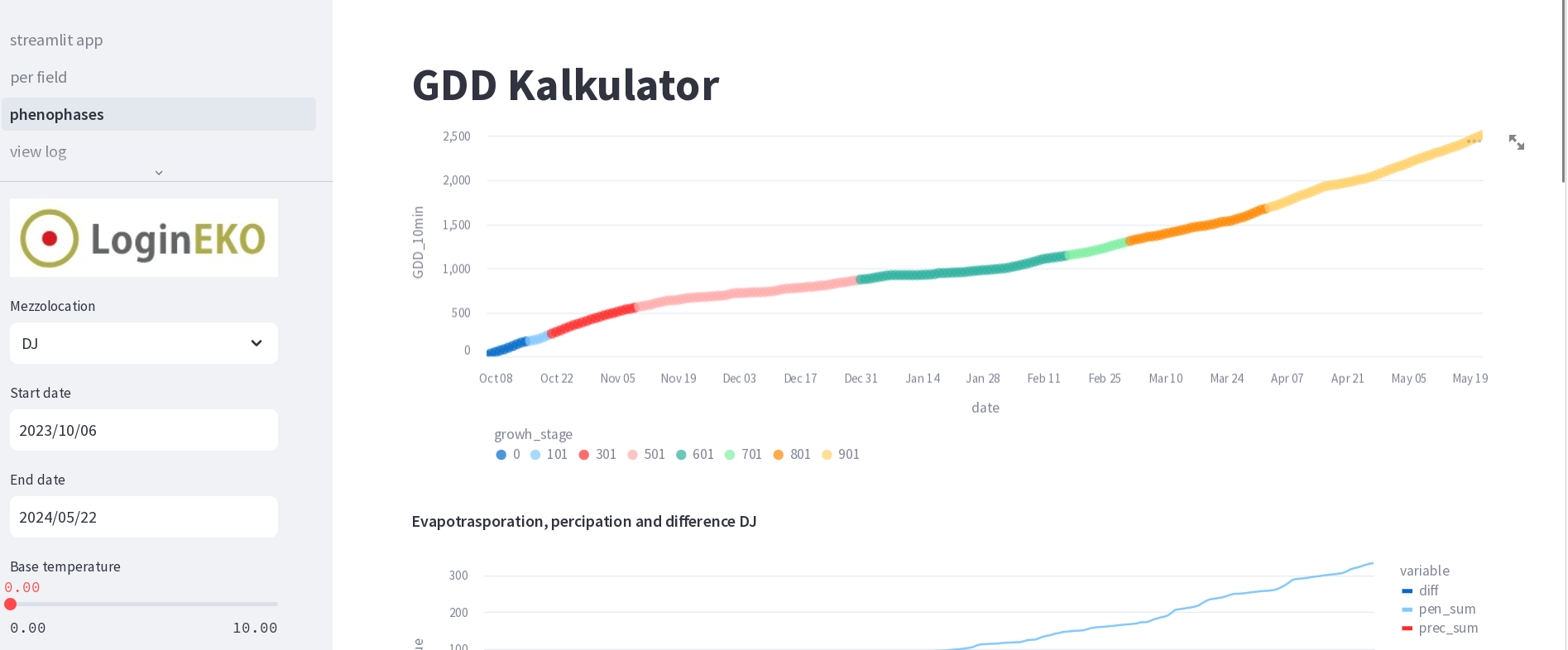2025 at LoginEKO: Building Large-Scale Organic Farming That Works
December 23, 2025A look back at 2025 at LoginEKO: large-scale organic farming results, plant-based nitrogen, open traceability, farming software, and food development.
Read articleManaging field operations across large farms is time-consuming. Cultivation templates simplify the process by standardizing workflows for different crops.

Planning field operations before every sowing season is a critical yet time-intensive task, especially for agronomists managing large-scale farms. Every step, from land preparation to harvest, requires careful scheduling, the right equipment, and optimal timing.
To streamline this process and improve efficiency, our software, LoginEKO Farming, introduces cultivation templates, a feature within the Operations Module that standardizes and optimizes field planning with predefined, customizable workflows.
Cultivation templates are customizable, predefined sequences of operations required for growing specific crops.
Instead of manually planning every field operation, agronomists can rely on predefined templates that include all key steps:
Each template is built on agronomic expertise, past experience and years of collected data, ensuring that every operation occurs within its optimal time frame, using preferred implements for a structured and efficient workflow.

Once created, a cultivation template acts like a stamp, applying a predefined sequence of operations across multiple fields in just a few clicks.
This approach ensures a structured, data-driven workflow, reducing manual work while maintaining flexibility for real-time adjustments.
To make cultivation templates even more precise, we are working on integrating Growing Degree Days (GDD)—a data-driven method that calculates optimal timing for field operations based on temperature accumulation.
This enhancement will allow the system to automatically adjust schedules based on real-world climate conditions, ensuring better adaptability to seasonal variations.

A look back at 2025 at LoginEKO: large-scale organic farming results, plant-based nitrogen, open traceability, farming software, and food development.
Read articleOver 200 experts met in Serbia to share new ways to restore soil health. Here’s what we learned and why healthy soil matters for us all.
Read articleThe Plant Food Summit 2025 brought together Europe’s food system leaders to discuss how plant-based innovation can drive a healthier, more resilient, and future-proof food system. Here’s how they’re turning ambition into action.
Read article